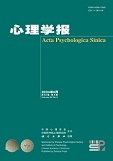Adolescents frequently encounter elevated levels of digital stress by exposure to digital media (e.g., smartphone stress). Their ongoing brain development increases adolescents’ susceptibility to digital stress, making them more vulnerable to its adverse effects. Among digital devices, smartphones are the most widely used ones by adolescents and a primary source of digital stress. The current study aims to investigate the robust association between digital stress, specifically smartphone stress, and adolescent mental health. The study also aims to investigate the underlying mechanisms of this association.
In Study 1, a multiverse-style analysis was employed to investigate the robust relationship between smartphone stress and mental health (depression and well-being) in a large sample of adolescents (N= 74 182, male = 39 192). This method was chosen for its robustness of various data manipulations to test the effect of interest, and median β and NSRPD (number of significant results in predominant direction) were used as statistical inference indicators of the effect. In Study 2, we conducted an intensive longitudinal design to examine the mechanism of how smartphone stress affects mental health among adolescents (N= 477, female = 214, Mage= 12.67 ± 0.31). Before intensive longitudinal design, we assessed smartphone stress, well-being, and depression (T1). Subsequently, daily rumination (consecutive 17 days, T2) and daily negative mood (consecutive 18 days, T3) were assessed over a 35-day period. Upon intensive longitudinal design, we once again measured well-being and depression (T4). We found that rumination, negative emotion (NE), and rumination-NE (serial mediation) mediate the link between smartphone stress and mental health (smartphone stress-depression model, smartphone stress-well-being model).
Study 1 indicated that over half of adolescents (52.6% of grade 4 students and 78.2% of grade 8 students) experienced smartphone stress. Furthermore, smartphone stress strongly and robustly predicted depression (Median β = 0.37, p < 0.001, NSRPD = 160/160, p< 0.001, partial r2 = 0.172) and well-being (Median β = −0.14, p < 0.001, NSRPD = 160/160, p < 0.001, partial r2 = 0.011). Effect sizes from both outcomes (partial r2 > 0.010) are capable to inform policy and the public sphere. Study 2 revealed that rumination intensity, negative emotion intensity, and rumination-negative emotion intensity mediate the relationship between smartphone stress and depression. However, no mediation was found for rumination or negative emotion fluctuation. In smartphone stress-well-being model, negative emotion intensity and rumination-negative emotion intensity, but not rumination intensity, mediated the association between smartphone stress and well-being. Moreover, negative emotion and rumination-negative emotion fluctuation, but not rumination fluctuation, mediated the association between smartphone stress and well-being. Therefore, the intensity and fluctuation of rumination and negative emotion are common mediators in the relationship between smartphone stress and depression/well-being, while the effects of mechanisms are outcome-dependent.
The findings pinpoint the significant and robust effect of smartphone stress on depression and well-being among adolescents. The mediation of rumination and negative emotion in the relationship between smartphone stress and mental health probes into the mechanism of this relationship. These results support classic theories (e.g., the Emotional Cascade Model) and confirm and enrich the recent Media use-Digital stress-Mental health model. These findings could also inform future interventions for mental health problems related to smartphone stress.




